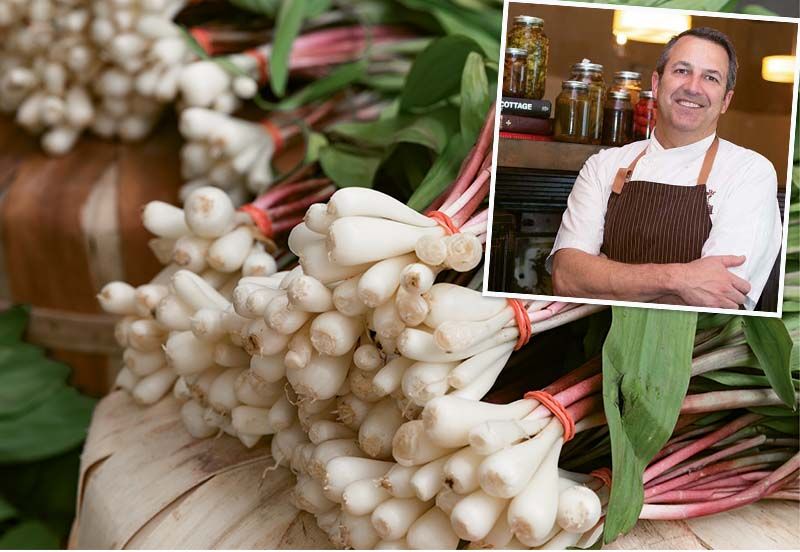To enjoy these prized wild onions long past their fleeting growing season, preserve them with help from The Grocery’s chef Kevin Johnson

Chef Kevin Johnson’s Pickled Ramps (Makes 4 pints)
3 to 3½ lbs. ramps
2 dried arbol or bird’s beak chilies, split lengthwise
12 sprigs of thyme
4 dried bay leaves (fresh if available)
1 Tbs. black peppercorns
3 cups champagne vinegar with 7% acidity
1½ cups water
1 cup granulated sugar
1 Tbs. Kosher salt
Trim the ramp bulbs at the point where the stems turn to dark green and clean them of any dirt or blemishes.
Sterilize four pint jars and their rings and lids. Pack the ramps into the jars. Add half an arbol chili, three sprigs of thyme, one bay leaf, and a pinch of peppercorn to each jar.
Combine the vinegar, water, sugar, and salt in a nonreactive pot and bring to a boil over high heat, stirring to completely dissolve the sugar and salt. Ladle the brine into the jars, leaving about half an inch of headspace at the top. Use a skewer to release any air bubbles, making sure there are no air pockets where the liquid hasn’t settled properly. Wipe the rims and threads of the jars clean. Place the lids on and screw the rings on firmly but not completely tight.
Process the jars for 10 minutes according to instructions for boiling-water canning.
Remove the jars onto a clean dish towel or rack and let stand for at least an hour to ascertain that they have properly sealed. The lids should become concave in the center. You should not be able to pop the center “button” up and down. Keep the jars in a cool, dark place for up to 12 months. If the lids do not seal, place the contents of the jars in a heatproof container and place in an ice bath until the contents are chilled. Cover and store in the refrigerator for up to three months.
For icebox pickles: skip the jarring and canning process altogether. Place the ramps and spices in a heatproof container large enough to hold them and the brine. Bring the brine to a boil, pour it over the ramps, and place it in an ice bath until the contents are chilled. Cover and store in the refrigerator for up to three months. Note: ramps need three days to cure before eating.
Chef’s Tips:
Meet the Chef: Kevin Johnson (pictured inset above)
Chef Kevin Johnson’s culinary curiosity first took hold during a vegetarian stint in his twenties. He learned cooking basics by reading books and soon discovered his interests extended beyond the home kitchen. The native Virginian worked in several local restaurants before pursuing a culinary arts degree at Johnson & Wales University, then located in Charleston. He continued to build his professional skills by studying with renowned chefs Patrick O’Connell at The Inn at Little Washington in Virginia and Frank Lee at Slightly North of Broad. Johnson opened his restaurant, The Grocery, in December 2011, where he has since received multiple James Beard Award nominations (including 2019 Best Chef Southeast). He is known for championing seasonal ingredients, local purveyors, and farms. Preserving fresh produce—like the wild ramp—with his in-house canning program is a hallmark of the chef’s culinary style that also highlights housemade charcuterie, Lowcountry fish, and game.